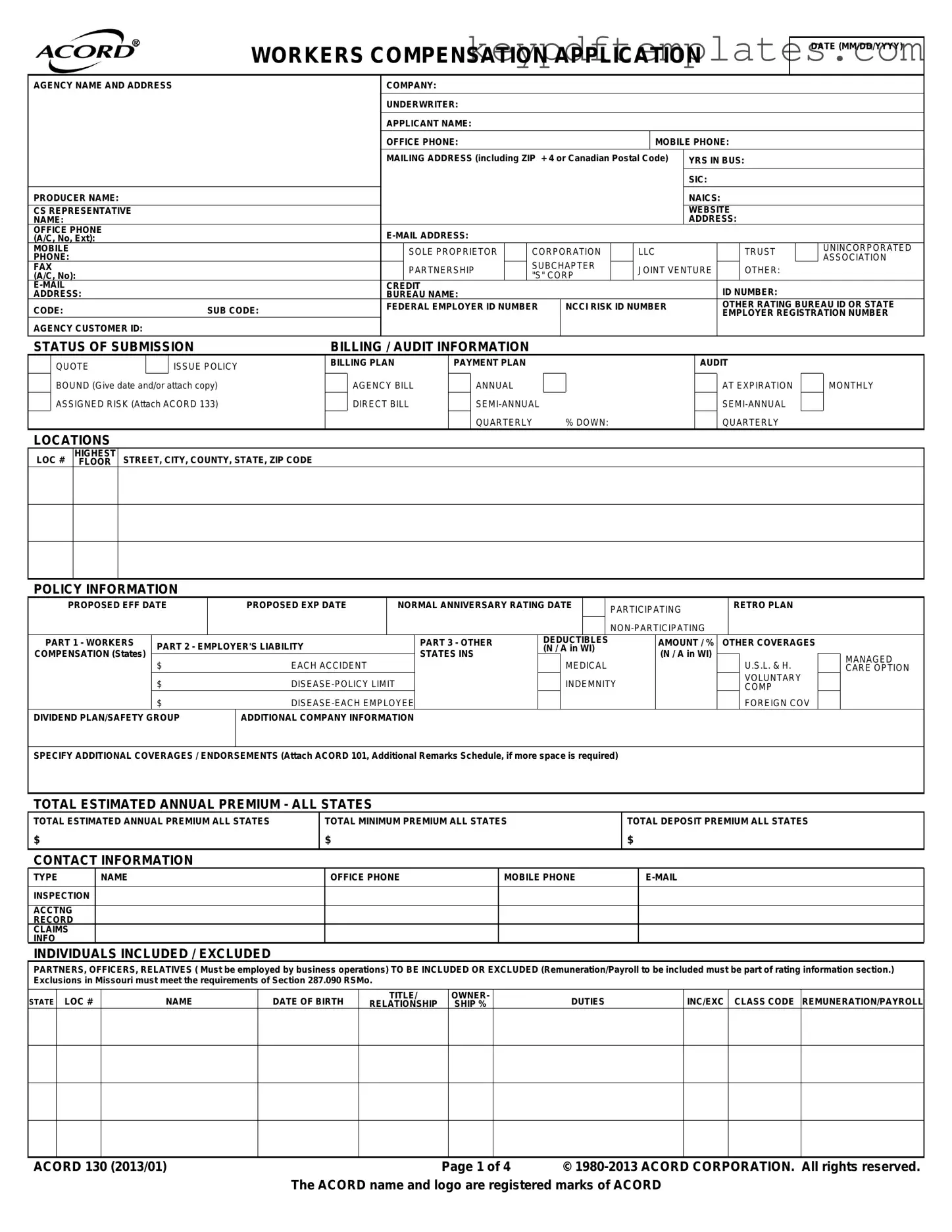- Misconception 1: The Acord 130 form is only for large businesses.
This form is applicable to businesses of all sizes, including small and medium enterprises. It helps ensure that all employers have the necessary workers' compensation coverage.
- Misconception 2: Completing the Acord 130 is optional.
For many businesses, completing this form is a requirement to obtain workers' compensation insurance. It is essential to ensure compliance with state regulations.
- Misconception 3: The Acord 130 form is only about employee information.
While employee details are crucial, the form also collects information about business operations, coverage needs, and prior insurance history.
- Misconception 4: The form can be filled out without prior knowledge of workers' compensation.
Understanding your business's specific needs and risks is important before completing the form. This knowledge helps ensure accurate and comprehensive information is provided.
- Misconception 5: Submitting the Acord 130 guarantees coverage.
Filling out the form does not guarantee that insurance will be issued. The insurer will review the information and determine eligibility based on their underwriting criteria.
- Misconception 6: The Acord 130 form is the same in all states.
While the Acord 130 is widely used, specific requirements and additional forms may vary by state. Always check your state’s regulations.
- Misconception 7: All businesses must include all employees on the form.
Some employees may be excluded based on specific criteria. It is important to understand which employees need to be reported for accurate coverage.
- Misconception 8: The Acord 130 form does not require updates.
Changes in business operations, employee counts, or other relevant factors may necessitate updates to the form. Keeping information current is vital.
- Misconception 9: The Acord 130 form is only for new businesses.
This form is used for both new and existing businesses seeking to establish or renew their workers' compensation coverage.
- Misconception 10: The Acord 130 form is too complicated to fill out.
While it may seem daunting, the form is designed to be straightforward. Assistance is available if needed, ensuring that all required information is accurately provided.
